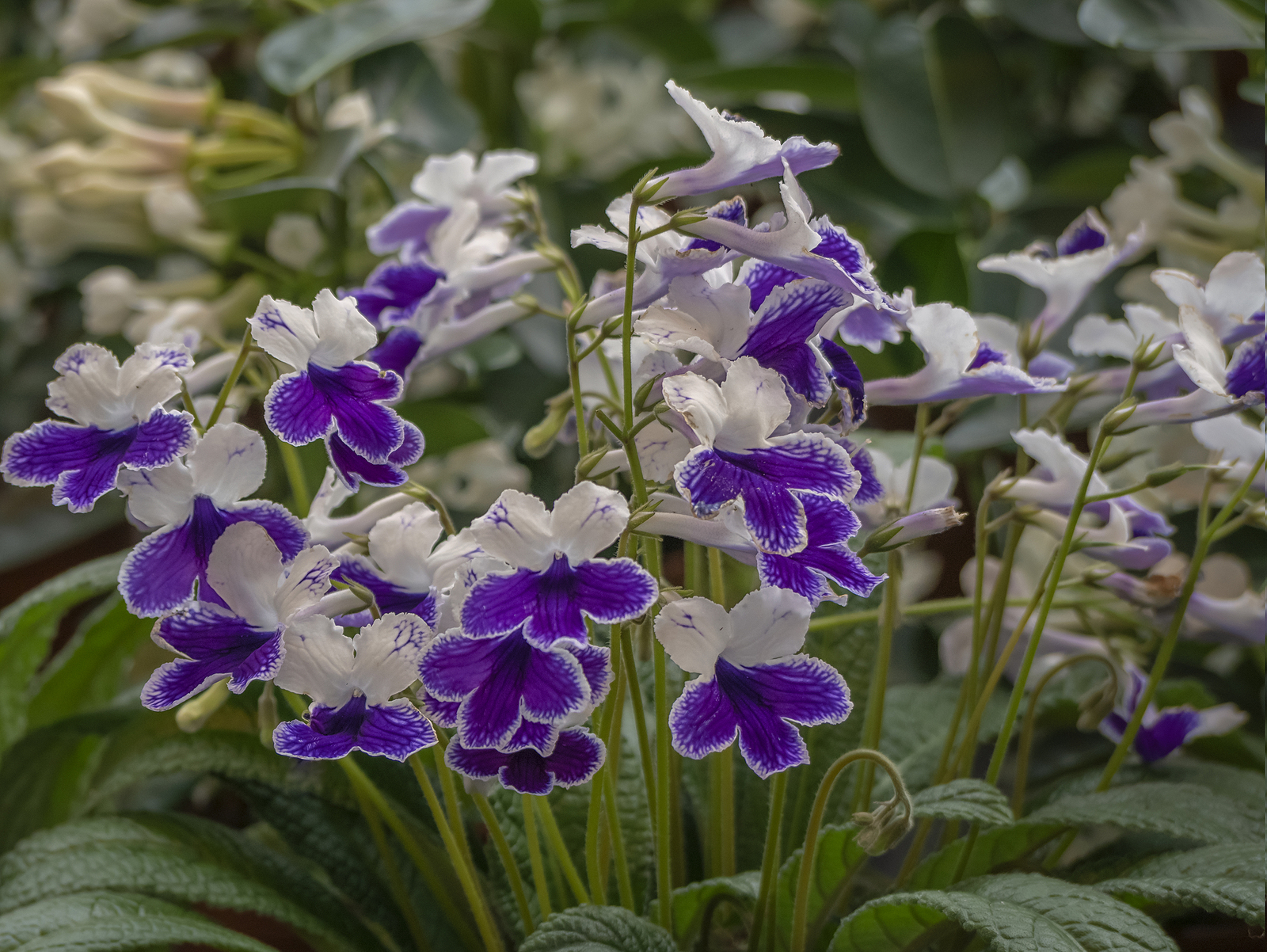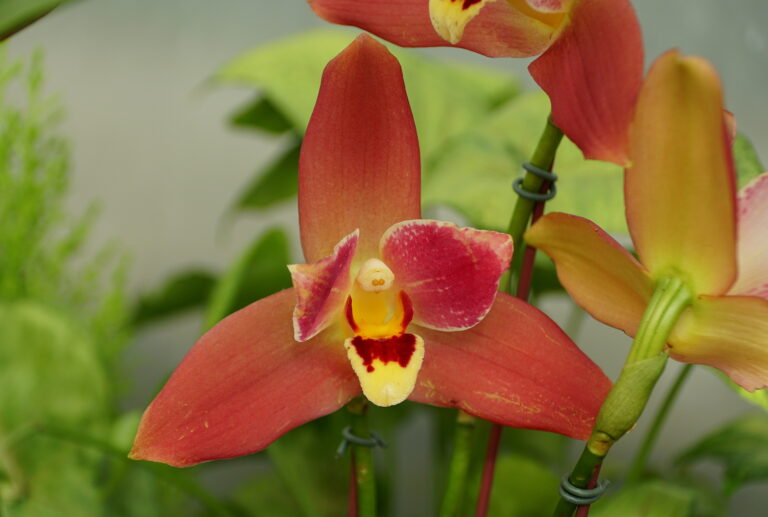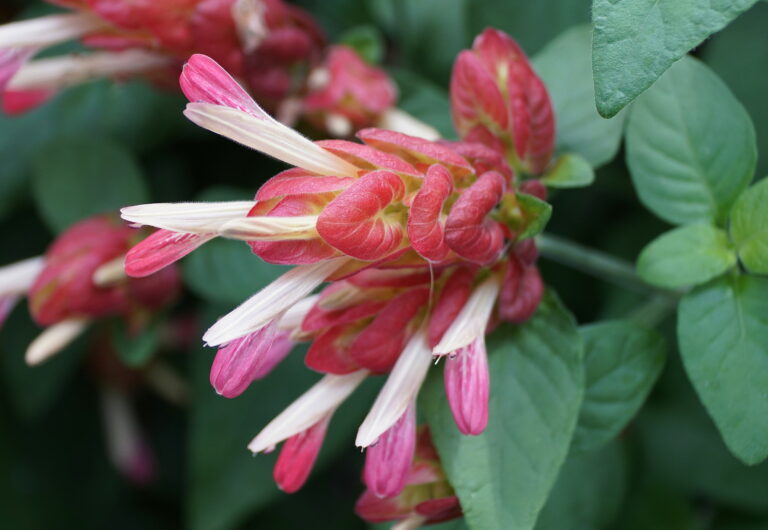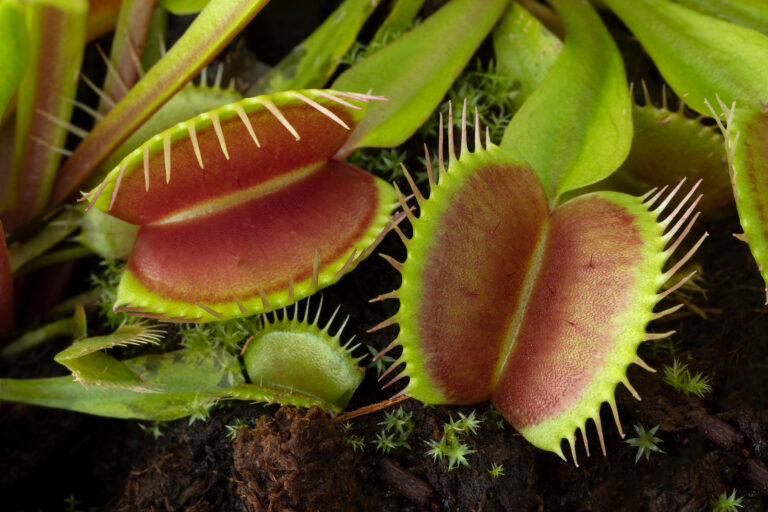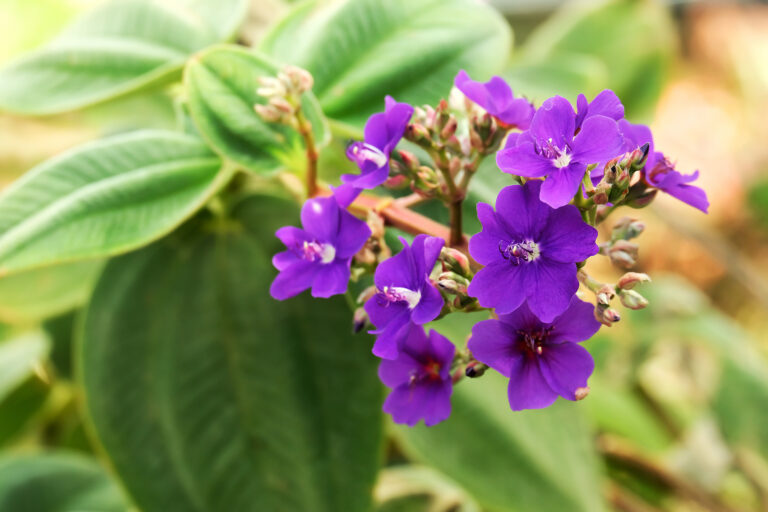How to Grow Cape Primrose — Streptocarpus
Streptocarpus–commonly called Cape Primrose–is a showy relative of the African violet. Streptocarpus boasts trumpet-shaped, long-lasting blooms in a wide range of colors. Bright light and cool temperatures are ideal for this show-stopper.
Streptocarpus wants evenly moist soil. Unlike African violet, water will not damage the foliage. Fertilize during the active flowering period, and remove spent blooms to encourage more to set.
Get to know Streptocarpus
- Plant type: Tropical perennial
- Growing Zones and range: Tropical
- Hardiness: Adapts to average room temperature with 5°F (3°C) drop at night
- Height and width: To 12 inches (30cm) tall
- Foliage: Scalloped, wrinkled, and hairy leaves grow in a rosette at the base of the plant
- Flowers: five-lobed, 2-inch (5cm) wide nodding trumpets of red, pink, blue, or purple blooms atop 6-inch (15cm) stalks nearly all year; flowers bloom in small clusters at the top of thin, leafless stems.
- Bloom time: Nearly all year, most abundantly in late spring through fall
- Uses: Flowering houseplant
- Botanical name: Streptocarpus hybrids
- Common name: Cape Primrose
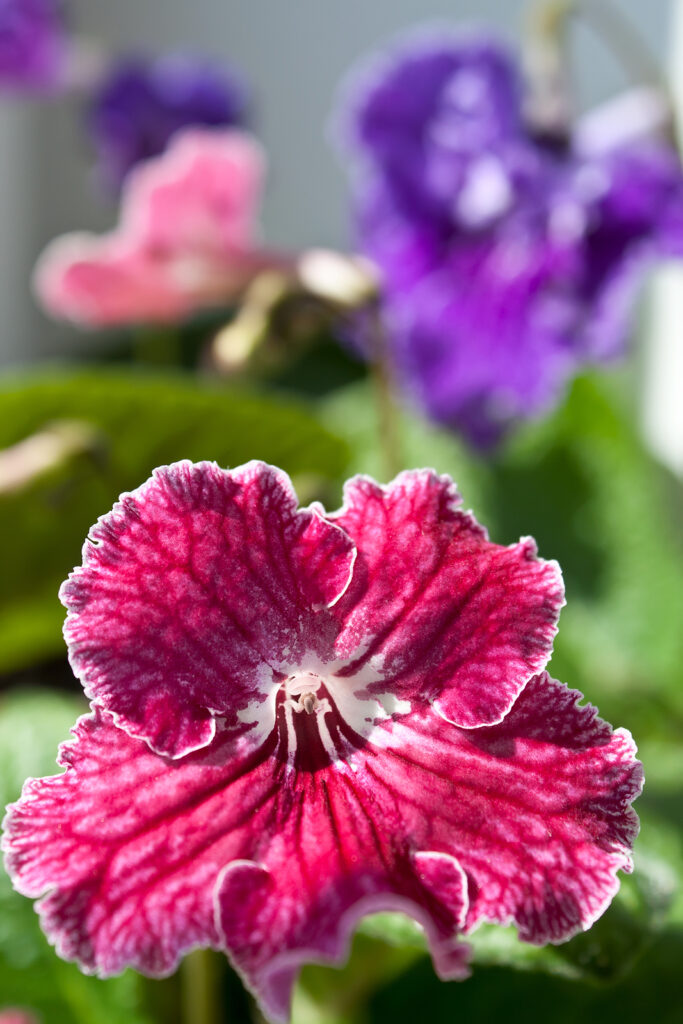
Where to plant Streptocarpus
- Streptocarpus grows best in bright light and high humidity.
- Grow Streptocarpus in shallow pots in African violet mix; the medium must be well-drained.
How to water and feed Streptocarpus
- Keep the soil moist but not soggy. After bloom, allow the soil to dry somewhat between waterings.
- Provide Streptocarpus a drier rest period after bloom.
- Fertilize twice a month with African violet fertilizer.
Streptocarpus care
- Limp stems and leaves indicate too little light, move plants to a brighter spot.
- Wilted , yellowed leaves may indicate root rot from overwatering; plants may recover if you let the soil dry out a bit between waterings.
- Repot Streptocarpus only when absolutely necessary.
Growing Streptocarpus as a houseplant
- Streptocarpus x hybridus and S. saxorum can be grown as houseplants.
- Streptocarpus likes a spot where the temperature is cool in winter and average the rest of the year.
- The light should be bright, the humidity high.
- Grow in a well-drained, rich, soilless medium, and from spring through fall, keep it evenly moist.
- In winter, water only enough to keep the plant from wilting.
- Fertilize twice a month during spring and summer.
- S. x hybridus goes dormant, S. saxorum does not go dormant. Keep S. saxorum in the house year-round.
Streptocarpus pests and diseases
- Aphids, mealybugs, and thrips may attack; root rot is the most common disease.
Streptocarpus propagation
- Take Streptocarpus leaf cuttings by slicing a leaf into three or four parts crossways; stand the pieces upright in a moist growing medium, and keep them warm until they produce roots and new growth.
- Divide Streptocarpus in spring.
Streptocarpus varieties to grow
- Streptocarpus x hybridus. Large group of hybrids that grow 12 to 24 inches tall with scalloped wrinkled leaves that grow in a rosette; flowers are 2 to 5 inches long and noding; flower colors includ white, pink, rose, red, blue, or purple often with a throat of cotrasting color; flowers bloom in small clusters.
- S. saxorum, dauphin violet, has oval leaves and lavender, tubular flowers; dauphin violet does not go dormant like cape primrose; keep it at room temperature year-round.

